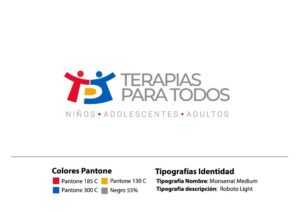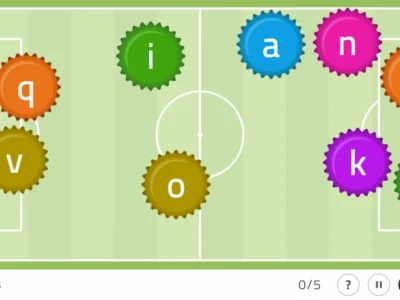When dysfunctions occur in one or more stages of nervous system development, the so-called childhood neurodevelopmental disorders arise. These disorders lead to or coexist with other medical, emotional, and importantly, neuropsychological conditions.
This post will focus on describing the neuropsychological consequences of some childhood neurodevelopmental disorders. Next, at least one childhood neurodevelopmental disorder of each type will be described, focusing on the neuropsychological effects derived from that condition.
Childhood neurodevelopmental disorders
Childhood neurodevelopmental disorders are varied and are defined especially based on different precipitating factors. These factors are: the cause, the age of onset and/or detection, and the symptomatology. There are also other key points in the definition of childhood neurodevelopmental disorders, such as the mother’s age, possible problems during pregnancy, genetics, and the perinatal and postnatal environment.
The classification that several authors agree on implies:
- Specific childhood neurodevelopmental disorders. These are contemplated in the DSM-V (Diagnostic and Statistical Manual of Mental Disorders). We may find: TDAH, communication disorders, TEA, among others.
- Early-onset childhood neurodevelopmental disorders. These can be anencephaly, hydrocephalus, etc.
- Childhood neurodevelopmental disorders due to genetic variations. For example, Down syndrome, Williams syndrome, and Angelman syndrome.
- Finally, childhood neurodevelopmental disorders due to environmental alterations, such as fetal alcohol syndrome or embryopathy due to valproic acid.
There are many studies dedicated to describing the neuropsychological effects derived from the neurodevelopmental disorders in the first group because of their close relationship with cognition. However, the literature on the neuropsychology of the other neurodevelopmental disorders is not as abundant despite the need for neuropsychology professionals to know this symptomatology in order to offer the patient comprehensive treatment.
Specific childhood neurodevelopmental disorders
For several years there have been a number of studies on the neuropsychological effects associated with brain disorders in children. TEA is one of the most studied childhood neurodevelopmental disorders from both the clinical and research perspectives, especially in high-income countries such as Spain. Table 1 provides a summary of the main neurodevelopmental disorders included in this group listed by incidence. As a result, it shows that the disorders with the highest incidence are TEA and TDAH.
ASD and its associated neuropsychological effects
Together with TDAH, TEA is the most prevalent childhood neurodevelopmental disorder in Spain. It is a designation that currently includes other disorders, specifically autism, pervasive developmental disorder not otherwise specified, and Asperger’s syndrome.
Although the main cause of these diagnoses is not known at the moment, the main hypotheses focus on a genetic cause. For this reason, TEA is subject to a high specificity as a disorder and to a high individuality as a patient. That is, it presents characteristic symptomatology that allows it to be easily distinguished from other childhood neurodevelopmental disorders. However, no two patients with TEA are the same since the patient’s personal development, the support (family, school, social, etc.), and the presence or absence of intellectual disability are modulating factors of TEA development. This must be taken into account in the intervention for each patient. Although each patient with TEA is unique, the diagnosis is usually made early, between 12 and 24 months. The diagnosis includes medical physical examinations, genetic assessments, and the administration of a neuropsychological and psychosocial assessment battery.
On the other hand, the most common neuropsychological effects in TEA are those related to communication, including thought and language. Some perceptual-motor skills and executive functions are also altered. Likewise, a complete neuropsychological assessment protocol must be applied to ensure which cognitive abilities are impaired or preserved. Regarding intervention, the American Psychological Association has proposed that only intervention protocols with an empirically consolidated basis be applied by experienced professionals.
Early-onset childhood neurodevelopmental disorders
These are those that arise during the formation and development of the fetal nervous system. Depending on the stage in which the condition occurs, so will the childhood neurodevelopmental disorder and its associated consequences. Figure 1 shows a diagram of the different early-onset childhood neurodevelopmental disorders according to the stage of nervous system development in which the anomaly occurs, or according to the most affected brain area.
The childhood neurodevelopmental disorders whose neurocognitive profile has been most studied are those referred to in the first column, those affecting the neural tube closure.
Hydrocephalus and its associated neuropsychological effects
Hydrocephalus is a childhood neurodevelopmental disorder that usually appears before birth or around it. Specifically, it is a disproportionate accumulation of cerebrospinal fluid (CSF), which affects head dimensions and brain development.
Among the most frequent causes is the presence of a brain tumor that causes displacement of structures and hinders optimal drainage of CSF. It can also be a consequence of a brain hemorrhage during fetal neurodevelopment. Although in many cases it is also due to a congenital defect. Given that it is an early-onset neurodevelopmental disorder, diagnosis is mainly based on the application of neurological exploration techniques that estimate the extra amount of CSF and the most affected brain parts. Primary intervention requires neurosurgery, since a drain must be placed at the brain level to evacuate the excess fluid.
The neuropsychological effects derived from hydrocephalus depend on the degree of brain compromise that has occurred due to that excess CSF. Some studies have shown that these patients present impairment in perceptual-motor skills, with problems in visual function specifically in constructive vision. In addition, they suffer alterations in working memory that require control and inhibition of information, and some executive functions such as planning are also anomalous. The use of pragmatic language is also affected with this diagnosis. For this reason, the neuropsychologist should work on these cognitive functions with the patient after neurosurgical recovery to ensure that the new brain configuration without the extra CSF allows these skills to develop as optimally as possible.
Childhood neurodevelopmental disorders due to genetic variations
Genes shape the biological characteristics of the human being, including the biological and also the cognitive part. Regarding the development of the brain, genetics also plays a key role in guiding that cerebral evolution not only of the species but of each individual within it. When there is some anomaly in genetics during brain development, this type of disorder arises. Table 2 presents the most frequent genetic disorders, although here Williams syndrome will be described since it has a characteristic cognitive profile.
Williams syndrome and its associated neuropsychological effects
It is an uncommon genetic disorder compared to Down syndrome. This syndrome presents high specificity and affects several fundamental cognitive functions. This childhood neurodevelopmental disorder arises from a microdeletion of chromosome number 7, which produces pathologies of different physical systems, such as cardiac malformations and metabolic problems related to different substances. It also produces characteristic phenotypic traits such as a elfin face.
Diagnosis is early and they are usually intervened from early ages with neurological, physical, and behavioral examinations. Early detection of this childhood neurodevelopmental disorder is essential in these patients since numerous studies have shown that rapid intervention can preserve certain cognitive abilities.
With respect to neuropsychological expectation, professionals in this field must know the disorder and establish an individualized cognitive profile since, although they are associated with a moderate-severe intellectual disability, some skills such as language and memory are preserved. In this sense, they recognize faces easily, are sensitive to sounds, and tend to form affective bonds. Nevertheless, they present dysfunction in visuospatial and/or visuoperceptual skills. Therefore, it is recommended that the neuropsychologist apply a neuropsychological assessment battery focused on perceptual skills (visual, auditory, sensory, etc.) in order to establish the patient’s strengths and weaknesses from a neuropsychological point of view and thus be able to develop their intervention plan.
Childhood neurodevelopmental disorders due to environmental variations
When childhood neurodevelopmental disorders are the consequence of factors present in the environment, a causal relationship is established as a hypothesis, although this cannot be proven in all cases.
Certainly, the nervous system begins its development in the first weeks of gestation (approximately at 21 days) and advances through different phases, some being more sensitive than others. Likewise, it has been shown that exposure of the nervous system to certain toxic agents or pathogens during some of these phases can lead to neurodevelopmental disorders. The source of toxicity does not always come from the pregnant mother (alcohol, tobacco, mental health problems, etc.), but can also be present in the environment in which she lives during gestation. For example, exposure to xenobiotic substances resulting from nearby industrial, agricultural, or urban activity. Table 3 shows a series of harmful factors to the developing nervous system whose exposure can cause irreversible effects on it.
Fetal Alcohol Syndrome and its associated neuropsychological effects
This syndrome is included within the Fetal Alcohol Spectrum Disorder (FASD), which implies a broader concept grouping all possible diagnoses with symptomatology that a child exposed to alcohol during prenatal development may suffer.
The cause is well known, since exposure to alcohol during prenatal life is the main cause of malformations during nervous system development, as seen in Table 3.
Among the symptoms associated with FAS diagnosis is a delay in systemic growth and especially brain growth, which produces alterations at synaptic levels and in structure formation. Likewise, craniofacial malformations are very characteristic in these patients, leading to significant cognitive and behavioral problems. Some patients also present problems in height and weight, and clinical seizure episodes are also frequent.
In the neuropsychological field, specific cognitive domains are affected, with learning problems being very common in these patients. Likewise, the most frequent studies highlight severe problems in processing, in verbal comprehension, in perceptual reasoning, and in the visuospatial domain. All this together with behavioral disorders with challenging nuances and rule-breaking. Although more is known about the neurocognitive profile of FAS, a specific profile for this syndrome has not yet been established since some dysfunctions are masked by other emotional disorders produced by lack of attachment or feelings of abandonment that most of these patients suffer from at an early age. For this reason the neuropsychologist should apply a standard neuropsychological assessment battery and work from the patient’s deficits and strengths with the patient and the family.
Conclusions
Although there is no established classification to break down childhood neurodevelopmental disorders, this entry has described some of these disorders according to their etiology, stage of onset, and comorbid consequences.
Consequently, one disorder within each type has been described with special emphasis on the neuropsychological effects they entail so that neuropsychology professionals have more information about them. Also, so they can carry out the work ahead, not only on the neurodevelopmental disorders contemplated in the DSM-V, which are the best known, but also on the rest of the disorders derived from a genetic or environmental malformation or those of early onset.
References
- Betts, J., Dawe, S., Eggins, E., Shelton, D., Till, H., Harnett, P., & Chandler‐Mather, N. (2019). PROTOCOL: Interventions for improving executive functions in children with Fetal Alcohol Spectrum Disorder: Systematic review and meta‐analysis. Campbell Systematic Reviews, 15(1-2), e1009.
- Braconnier, M. L., & Siper, P. M. (2021). Neuropsychological assessment in autism spectrum disorder. Current Psychiatry Reports, 23(10), 1-9.
- De la Torre, G. G., Martin, A., Cervantes, E., Guil, R., & Mestre, J. M. (2017). Attention lapses in children with spina bifida and hydrocephalus and children with attention-deficit/hyperactivity disorder. Journal of clinical and experimental neuropsychology, 39(6), 563-573.
- García, R. J. G., & Agramonte, M. D. L. Á. R. (2020). Comorbidity in patients with neurodevelopmental disorders. Revista Cubana de Pediatría, 92(4).
- Gonzalvo, G. O. (2011). Frequency of fetal alcohol syndrome in institutionalized children from Eastern European countries. Revista de neurología, 53(2), 127-128.
- Klein-Tasman, B. P., van der Fluit, F., & Mervis, C. B. (2018). Autism spectrum symptomatology in children with Williams syndrome who have phrase speech or fluent language. Journal of autism and developmental disorders, 48(9), 3037-3050.
- Lange, S., Shield, K., Rehm, J., Anagnostou, E., & Popova, S. (2019). Fetal alcohol spectrum disorder: Neurodevelopmentally and behaviorally indistinguishable from other neurodevelopmental disorders. BMC psychiatry, 19(1), 1-10.
- Lense, M. D., Ladányi, E., Rabinowitch, T. C., Trainor, L., & Gordon, R. (2021). Rhythm and timing as vulnerabilities in neurodevelopmental disorders. Philosophical Transactions of the Royal Society B, 376(1835), 20200327.
- Livingston, L. A., & Happé, F. (2017). Conceptualising compensation in neurodevelopmental disorders: Reflections from autism spectrum disorder. Neuroscience & Biobehavioral Reviews, 80, 729-742.
More bibliographic references
- Mattson, S. N., Crocker, N., & Nguyen, T. T. (2011). Fetal alcohol spectrum disorders: neuropsychological and behavioral features. Neuropsychology review, 21(2), 81-101.
- Mikkelsen, R., Rødevand, L. N., Wiig, U. S., Zahl, S. M., Berntsen, T., Skarbø, A. B., … & Wester, K. (2017). Neurocognitive and psychosocial function in children with benign external hydrocephalus (BEH)—a long-term follow-up study. Child’s Nervous System, 33(1), 91-99.
- Parenti, I., Rabaneda, L. G., Schoen, H., & Novarino, G. (2020). Neurodevelopmental disorders: from genetics to functional pathways. Trends in Neurosciences, 43(8), 608-621.
- Riley, E. P., Infante, M. A., & Warren, K. R. (2011). Fetal alcohol spectrum disorders: an overview. Neuropsychology review, 21(2), 73.
- Serrano-Juárez, C. A., Prieto-Corona, D. M. B., & Yáñez-Téllez, M. G. (2018). Neuropsychological intervention in a case of a girl with Williams syndrome. Cuadernos de Neuropsicología/Panamerican Journal of Neuropsychology, 12(2).
- Vacas, J., Antolí, A., Sánchez-Raya, A., & Cuadrado, F. (2020). Analysis of cognitive profiles in a clinical pediatric population with neurodevelopmental disorders. Revista Iberoamericana de Diagnóstico y Evaluación-e Avaliação Psicológica, 1(54), 35-46.
- Vivanti, G., Hamner, T., & Lee, N. R. (2018). Neurodevelopmental disorders affecting sociability: recent research advances and future directions in autism spectrum disorder and Williams syndrome. Current neurology and neuroscience reports, 18(12), 1-9.
- Zielińska, D., Rajtar-Zembaty, A., & Starowicz-Filip, A. (2017). Cognitive disorders in children’s hydrocephalus. Neurologia i neurochirurgia polska, 51(3), 234-239.
- Zwick, G. P. (2017). Neuropsychological assessment in autism spectrum disorder and related conditions. Dialogues in clinical neuroscience, 19(4), 373.
If you liked this post about childhood neurodevelopmental disorders and their neuropsychological effects, we recommend you take a look at these publications:
“This article has been translated. Link to the original article in Spanish:”
Los trastornos del neurodesarrollo infantil y sus efectos neuropsicológicos







 Physiotherapy and dual-tasking: therapeutic exercise with NeuronUP
Physiotherapy and dual-tasking: therapeutic exercise with NeuronUP
Leave a Reply